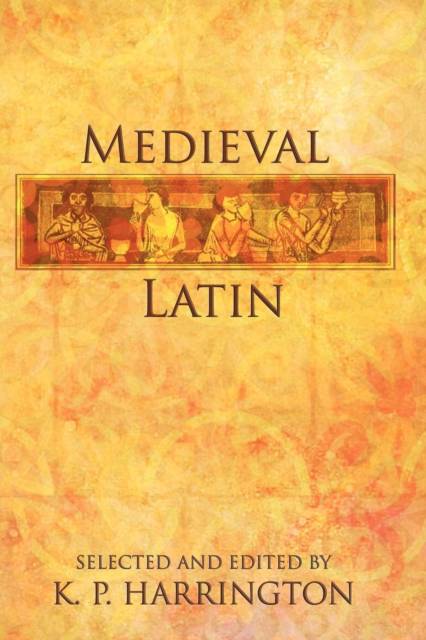
Je cadeautjes zeker op tijd in huis hebben voor de feestdagen? Kom langs in onze winkels en vind het perfecte geschenk!
- Afhalen na 1 uur in een winkel met voorraad
- Gratis thuislevering in België vanaf € 30
- Ruim aanbod met 7 miljoen producten
Je cadeautjes zeker op tijd in huis hebben voor de feestdagen? Kom langs in onze winkels en vind het perfecte geschenk!
- Afhalen na 1 uur in een winkel met voorraad
- Gratis thuislevering in België vanaf € 30
- Ruim aanbod met 7 miljoen producten
Zoeken
Omschrijving
This is a reprint of the original edition from 1925. A classic that has stood the test of time, this book is designed to introduce the reader to Medieval Latin, for more than a thousand years the universal language of church, state, school, and society. From the overwhelming mass of material that has lain hidden in musty tomes and quaint manuscripts the editor has selected examples in the various fields of medieval literature, except the didactic and homiletic works of the church fathers. This gives a conspectus of the whole subject by typical samples from different periods. The selections represent history, anecdote, argument, the epistle, the drama, the essay, the dialogue, the novel, and epic, lyric, pastoral, didactic, and satiric verse. Teachers or students wishing to specialize in any of these forms will find the selections topically outlined at the end of the Table of Contents. For the student of history, comparative literature, or civilization in general, these pages have a profound significance. To the student of the Latin language and literature, they show that Latin from Ennius to Erasmus, during a period of nearly a millennium and three quarters, is more homogeneous than is English from Chaucer to Tennyson, a matter of only five hundred years. The student of the Romance and other modern languages can here see important processes actually going on in the development of these languages. The selections are useful for schools, for colleges, or for the general reader, and have been chosen with a view to intrinsic interest.
Specificaties
Betrokkenen
- Auteur(s):
- Uitgeverij:
Inhoud
- Aantal bladzijden:
- 736
- Taal:
- Engels
Eigenschappen
- Productcode (EAN):
- 9780979505119
- Verschijningsdatum:
- 10/01/2007
- Uitvoering:
- Paperback
- Formaat:
- Trade paperback (VS)
- Afmetingen:
- 152 mm x 229 mm
- Gewicht:
- 966 g

Alleen bij Standaard Boekhandel
+ 81 punten op je klantenkaart van Standaard Boekhandel
Beoordelingen
We publiceren alleen reviews die voldoen aan de voorwaarden voor reviews. Bekijk onze voorwaarden voor reviews.









